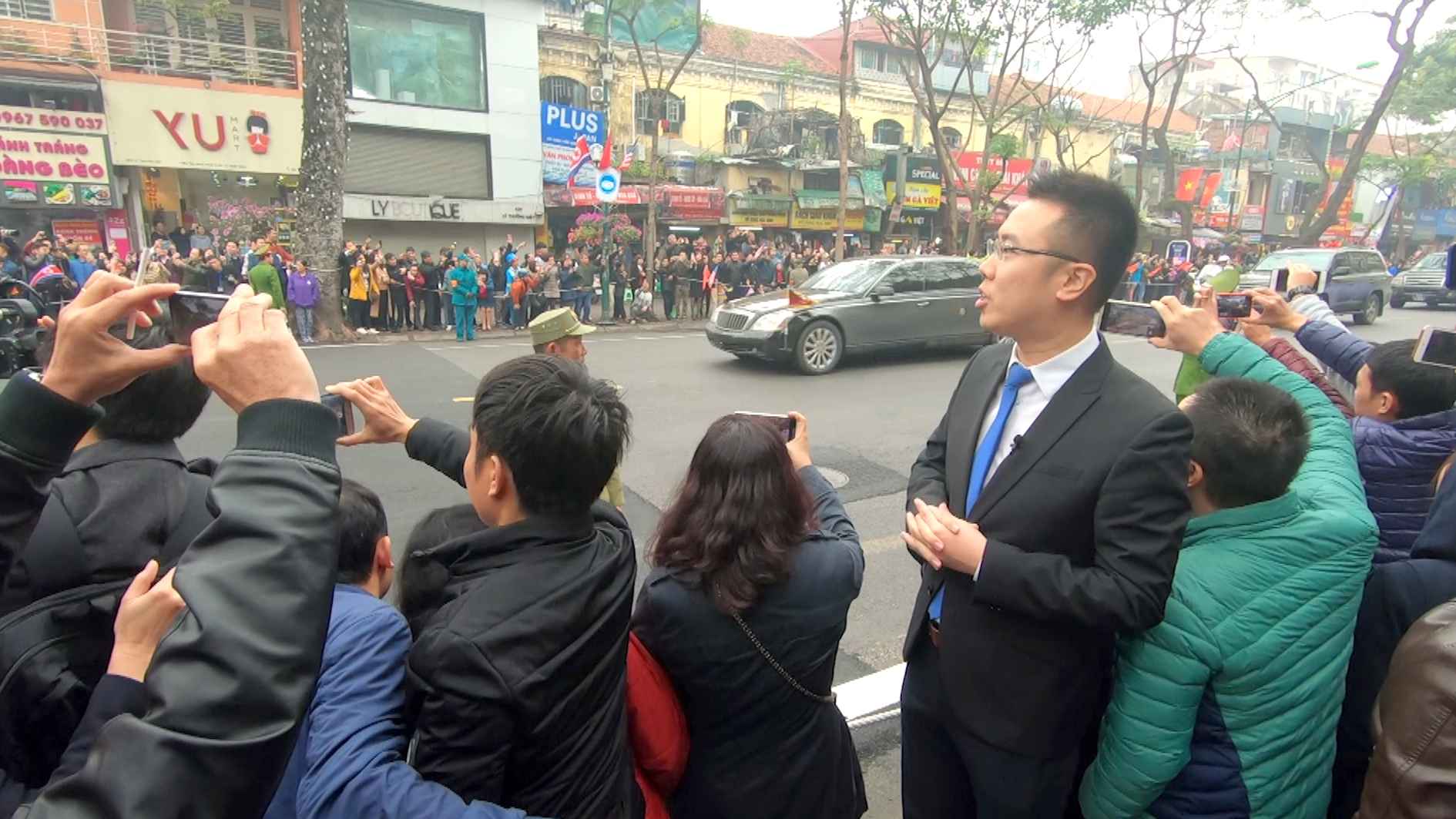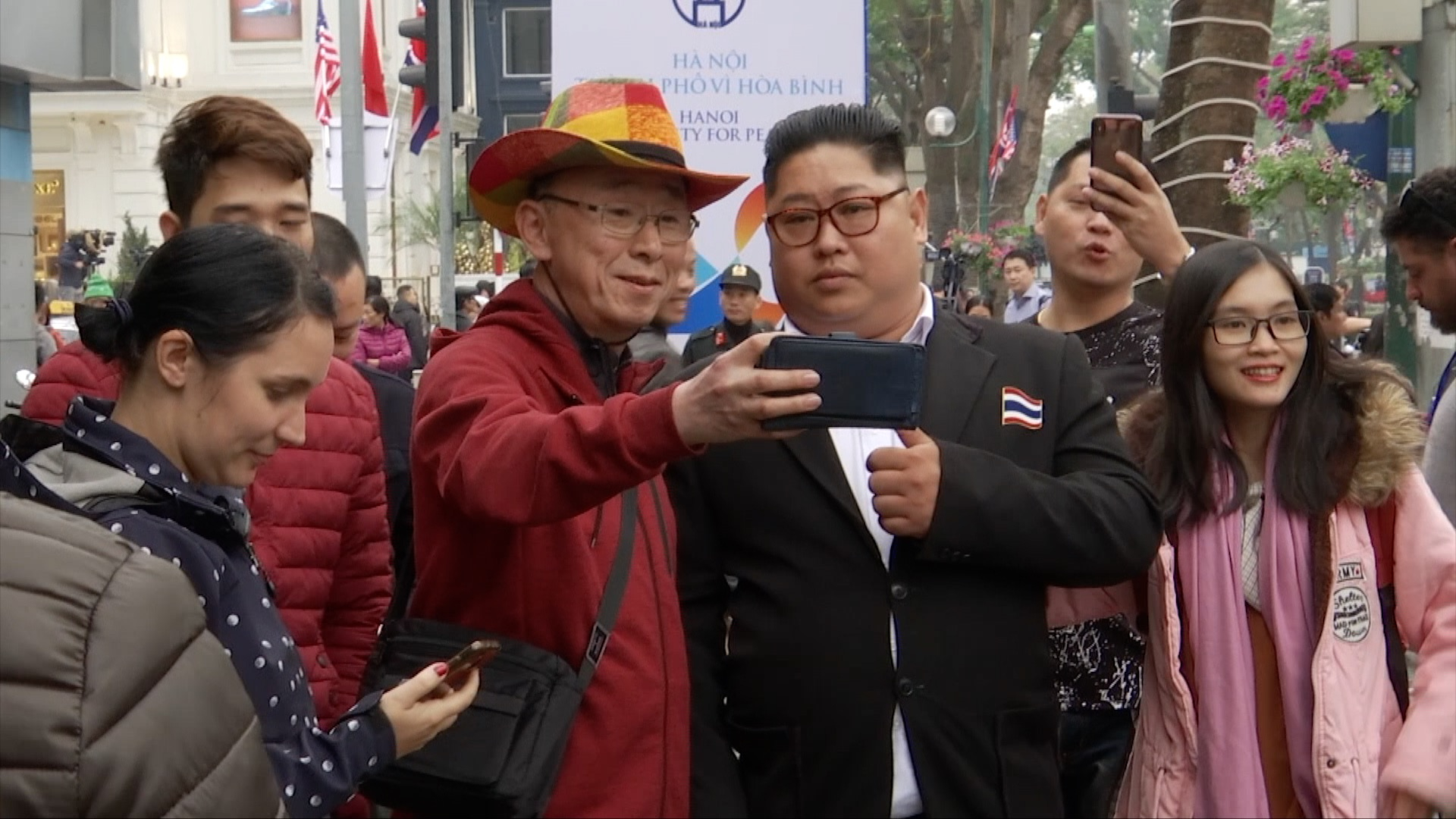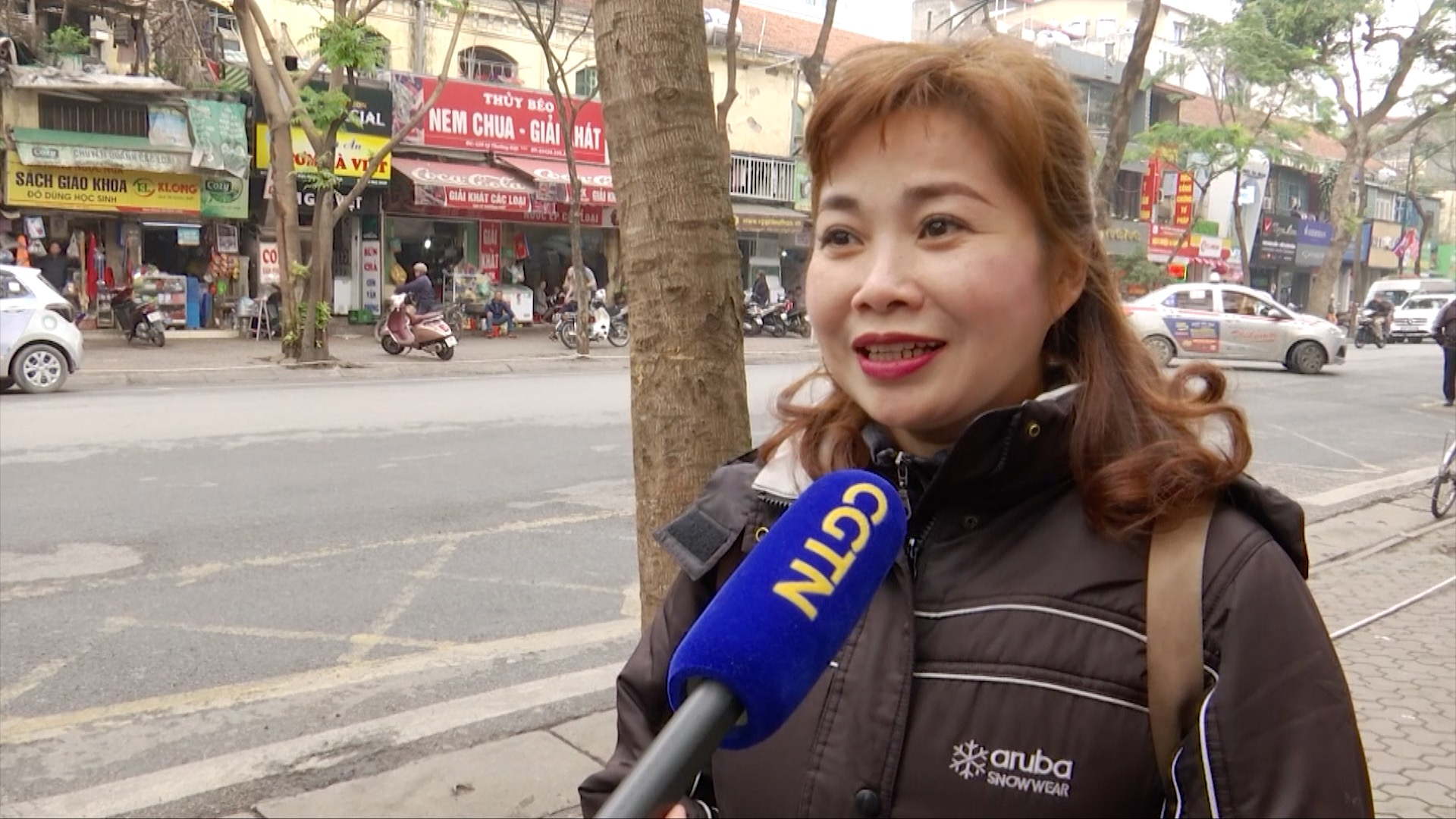
Asia Pacific
08:28, 27-Feb-2019
Humor, hope and heat outside Kim Jong Un's hotel
Updated
16:30, 27-Feb-2019
By Han Peng
01:06

Tuesday was a big day for Vietnam. Two of the world's most discussed leaders, U.S. President Donald Trump and the Democratic People's Republic of Korea (DPRK) leader Kim Jong Un, have arrived in Hanoi.
Kim arrived in the morning, following a 60-hour green-skinned train journey all the way from Pyongyang to the China-Vietnam border. He then took a car and arrived at his hotel at around 11:00 a.m. local time. At around 5:00 p.m., he visited the DPRK embassy to Vietnam. Trump, however, was much simpler. He flew directly to Hanoi and arrived at around 9:00 p.m..
00:42

So far, most of their schedule remains unknown. Thousands of reporters from all around the world, including us, are sticking around near their hotels, trying to figure out what their next moves will be. Any minor movement outside the hotel, such as a police car, causes a major stir among the crowd of reporters eager to capture some historic shots.
Traffic in Hanoi is known for being congested, if not chaotic. Cars, motorcycles, pedestrians are often mixed in the same lanes of the narrow roads.
But starting from Tuesday, the local authorities cleared the parked motorcycles and erected barricades along the streets that the two leaders will be using.

A Kim Jong Un impersonator takes photos with Hanoi locals. /CGTN Photo
A Kim Jong Un impersonator takes photos with Hanoi locals. /CGTN Photo
On the Internet, local authorities announced that some of the city's landmarks will be closed to the public, but because none of the three countries has officially confirmed their schedule, figuring out what is actually happening has been a big guessing game for the public.
Despite the blockades, ordinary residents can get very close to the motorcades from the sidewalk, with many holding the national flags of the U.S., the DPRK and Vietnam, showing just how much this event means to the country.
For most locals, it's a time of pride and excitement. It's their city's first time hosting a major political event of this nature.

CGTN speaks to a Hanoi local. /CGTN Photo
CGTN speaks to a Hanoi local. /CGTN Photo
Both Vietnam and the DPRK belonged to the Soviet camp in the Cold War, and went through bitter wars against the United States. But Hanoi reconciled with the West after the Vietnam War ended in 1975, and it rose from a war-torn state to become a prominent emerging economy in mere 30 years.
Many analysts say it was the U.S. that chose to hold the summit in Hanoi because the Trump Administration wants to sell the “Vietnam model” to the DPRK, but will Kim buy it?

SITEMAP
Copyright © 2018 CGTN. Beijing ICP prepared NO.16065310-3
Copyright © 2018 CGTN. Beijing ICP prepared NO.16065310-3